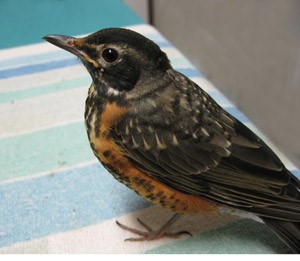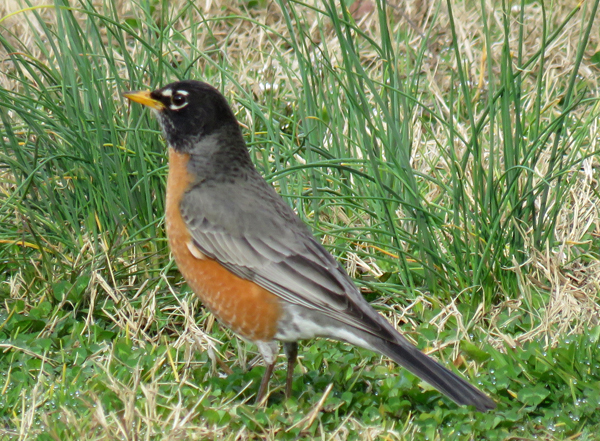

January 5, 2021
Stout Farm Rd, Tobaccoville, NC

March 2, 2021
Long Creek Park
Turdus migratorius
Phonetic description of songs:
cheerily cheerup cheerio
cheerily, cheer up, cheer up, cheerily, cheer up
plurri, kliwi, plurri, kliwi
What is known about the robin’s song?
Repertoire:
• Each male’s repertoire is unique (Kroodsma 2005)
• Improvise, invent new elements while learning and after establishing territory (Johnson 2006, Kroodsma 2005)
• Alternates two phrases
• 6/10-20 caroling phrases (Vanderhoff 2020)
• 75-100 hisselly phrases (Whisper song) (Kroodsma 2005)
• Whisper syllables often at end of more familiar phrases and interspersed within the phrase (Vanderhoff 2020)
• Far more different types of Whisper Song than familiar song (Kroodsma 2005)
• One of the longest period of song activity during day (Wright 1912)
• Males sing in late winter, continuing until young hatch (Vanderhoff et al. 2020), singing resumes soon after young fledge (about day 13), little singing during molt (Jul–Aug) (Vanderhoff et al. 2020)
• Singing at the end of September (secondary song) (Bicknell 1884)
• Most singing stops by end of Oct, but winter singing does occur
(Vanderhoff 2020)
Neighbors:
• Neighboring males share same whistles in their songs
Females:
Females may sing (Wauer 1999a)
How and when is song acquired?
• Invent or improvise most of the elements (75–82%), but as fledglings and juveniles learn the remaining elements from neighboring birds (Johnson 2006)
• Young remain on breeding grounds for up to 4 months (Young 1955)
• In September young gather in mixed flocks with adults, follow them to feed and migrate with them to wintering grounds (Young 1955)
• Can learn from tapes (Johnson 2006)
How can we facilitate learning?
• Re-nest!
• Adopt fledglings out (fledglings wonder and are adopted by other adults) (Young 1955)
• Raise with singing adults
• Expose to outdoor singing
• Play recordings
–Play various songs of many birds
–Play whisper song
Bicknell, E. P. (1884). A study of the singing of our birds. Auk 1:60-71.
Johnson, Steven L. (2006b). Do American robins acquire songs by both imitating and inventing? Wilson Journal of Ornithology 118 (3):341-352.
Vanderhoff, N., P. Pyle, M. A. Patten, R. Sallabanks, and F. C. James (2020). American Robin (Turdus migratorius), version 1.0. In Birds of the World (P. G. Rodewald, Editor). Cornell Lab of Ornithology, Ithaca, NY, USA. https://doi.org/10.2173/bow.amerob.01
Wauer, R. H. (1999a). American Robin. Austin: Univ. of Texas Press.
Wright, H. W. (1912b). Morning awakening and even-song. Auk 29:307-327.
Young, H. (1955). Breeding behavior and nesting of the eastern robin. American Midland Naturalist 53:329-352.